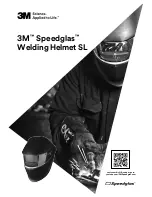
LESSON PLAN
The following lessons are recommended in order to learn basic steps and bounces before moving
onto more difficult or complicated bounces. You should read and understand all safety instructions
before mounting the trampoline. A complete discussion and demonstration of body mechanics and
trampoline guidelines should occur between the supervisor and student.
Lesson 1
A. Mounting and Dismounting - Demonstration of proper techniques.
B. The Basic Bounce - Demonstration and practice.
C. Braking (Checking the Bounce) - Demonstration and practice. Learn to stop on command.
D. Hands and Knees - Demonstration and practice. Stress should be on four-point landing and align-
ment.
Lesson 2
A. Review and practice of techniques learned in Lesson 1.
B. Knee Bounce - Demonstration and practice. Learn the basic down-to-knee and back up before try-
ing half twist to left and right.
C. Seat Bounce - Demonstration and practice. Learn basic Seat Bounce then add a Knee Bounce,
hands and knees; repeat.
Lesson 3
A. Review and practice skills and techniques learned in previous lessons.
B. Front Drop - All students should be requested to assume the prone position (face down on the
ground) while the instructor checks for faulty positions that could cause injury.
C. Start with a Knee Bounce and then extend body into prone position, land on the mat and return to
feet.
D. Practice Routine - Knee Bounce, Front Bounce, back to feet, Seat Bounce, back to feet.
Lesson 4
A. Review and practice skills and techniques learned in previous lessons.
B. Half-Turn.
- Start from Front Drop position. As you make contact with the mat, push off with arms in either the
right or left direction and turn head and shoulders in same direction.
- During turn, be sure to keep back parallel to mat and head up.
- After completing turn, land in Front Drop position.
After completing this lesson, the student now has a basic understanding of trampoline bounces.
Jumpers should be encouraged to develop their own routines with emphasis on control and form.
A game that can be played in order to encourage students to try and develop routines is “BOUNCE”.
In this game, players count off from 1 to 10. Player one starts with a maneuver. Player two has to do
Player One’s maneuver and add on another. Player Three does the maneuvers of One and Two and
then adds a third maneuver. This continues until a player cannot do the routine properly in the correct
sequence. The first person to miss receives the letter “B”. This continues until someone spells out the
word “BOUNCE”. The last remaining contestant is deemed the winner! Even when playing this game,
it is important to perform your routines under control. Do not try difficult or highly skilled bounces that
you have not yet mastered.
A certified trampoline instructor should be contacted to further develop your
trampoline skills.



































